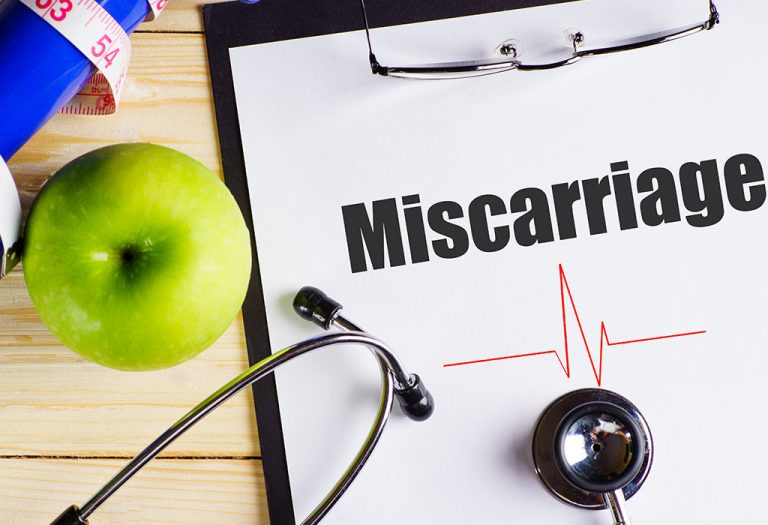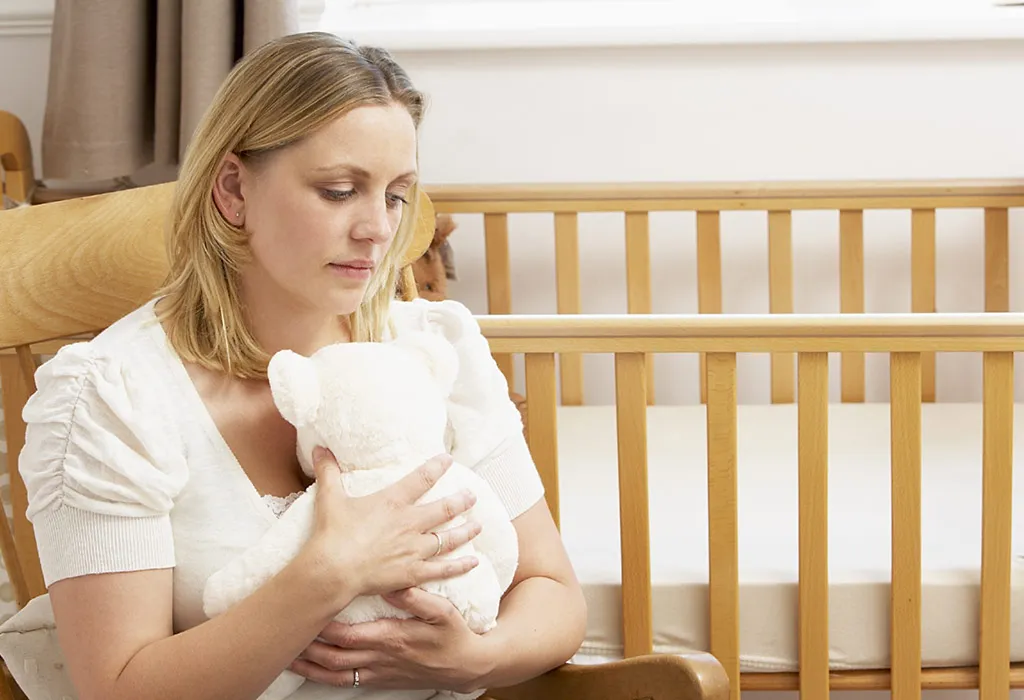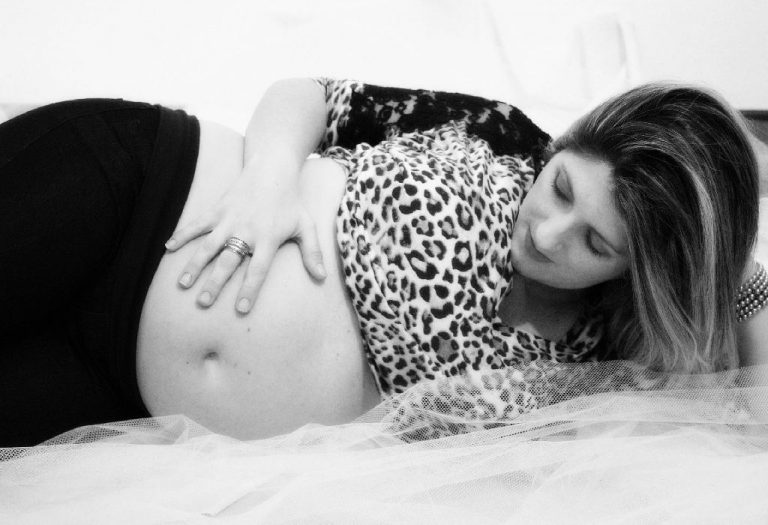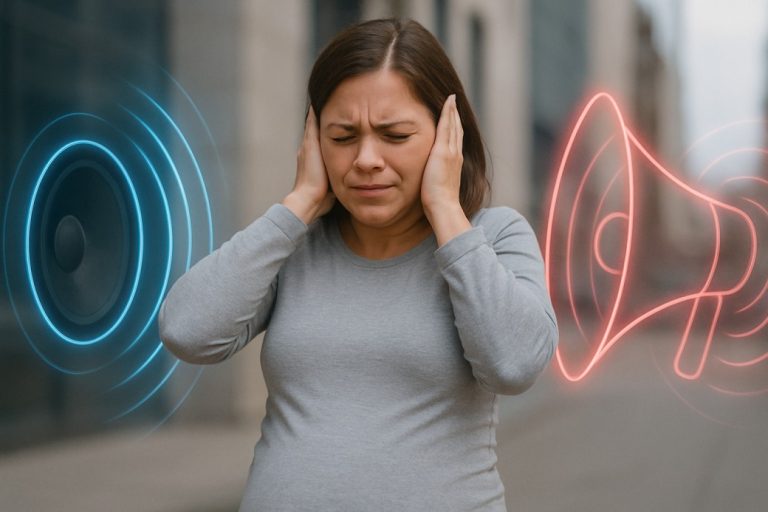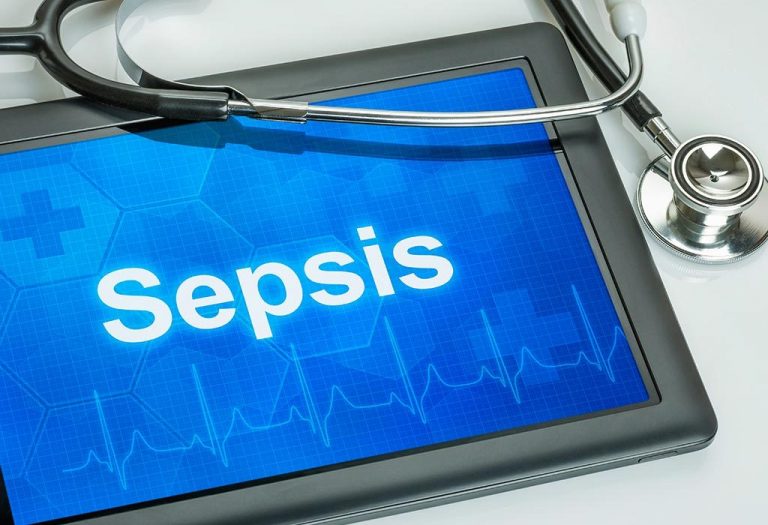Miscarriage – Types, Causes & Symptoms
Of the many things that make a pregnant woman, the fear of miscarriage is the most common. While a miscarriage is a sign of immediate medical attention in many situations, adequate care and timely action can prevent its occurrence. It is important to remember that the reason for miscarriage does not solely rely on a mother; it’s chemical, it’s natural, and sometimes unavoidable. Being informed about the various factors which affect the health of the foetus, especially during the early stages of pregnancy, the early signs of a miscarriage, risk factors, and prevention can help a great in reducing the likelihood of miscarriage in some cases.
What Is a Miscarriage?
If you are looking miscarriage meaning, you are certainly at the right place. According to sources, miscarriage or spontaneous abortion is the most common type of foetus loss during pregnancy in the first 20 weeks of gestation (1). It is the natural death of the embryo before it is able to survive independently. Miscarriage in pregnancy is sadly very common in women during the first few months of pregnancy and is known as a first-trimester miscarriage. The first pregnancy miscarriage rate is said to be high as well, which is why maximum care needs to be taken, especially during the initial stages of pregnancy. Around 10 to 20% of known pregnancies result in miscarriage (2).
Cases are often mistaken, due to the onset of a late period, as an uninvited pregnancy. Although miscarriage in pregnancy is common, it can still be a devastating and traumatic experience for everyone involved.
Pregnancy and Miscarriage
A miscarriage usually occurs before the foetus is 24 weeks old. A foetal loss experienced in the first 12 weeks of pregnancy is commonly known as early miscarriage, while a foetal loss occurring between 12-24 weeks is known as a late miscarriage.
1. How Does a Miscarriage Start?
Most of the miscarriages are due to genetic abnormalities. But a point of relief is that these abnormalities are not genetic, in the sense that these occurrences are not passed down to the next pregnancy. Certain uterine abnormalities can also lead to miscarriages. Even thyroid disorders can result in miscarriages, even though they have a low percentage. A weak cervix or an incompetent cervix can cause miscarriage, usually in the second trimester.
2. Reasons for Miscarriage
There could be various reasons for miscarriages to happen, and one of the common reasons for a miscarriage is one’s habits and lifestyle. Habits such as drugs, alcohol consumption and smoking can have an impact on one’s pregnancy. Scientifically speaking, certain bacteria majorly found in eggs and raw meats get embedded in the system and cause miscarriages. Psychologically speaking, maternal trauma could also lead to unfortunate incidents. A few others include hormonal abnormalities, chronic illness and delayed pregnancy.
3. What Happens When You Have a Miscarriage?
It is normal for a woman who faces miscarriage to undergo immense mental trauma, as the situation is hard to let go of. For a certain period of time, depression might take a toll on you, and it is during this time that emotional support is needed more than ever. Also, a miscarriage can develop a fear of pregnancy in some women, wherein they are presumably reluctant to attempt the next pregnancy.
4. Can One Have a Miscarriage and Not Be Aware of it?
Sometimes, the bleeding and cramps are mistaken for a potential miscarriage. But during these incidents, one has to be extremely careful to avoid any possibility of miscarriage, if at all it exists. Only an ultrasound can confirm a miscarriage, and hence, in any situation of cramps accompanied by bleeding, one needs to see a doctor to confirm and not take it lightly. One might have overlooked the possibility of an early miscarriage bleeding.
5. Does a Miscarriage Cause Pain?
A woman may experience mild to severe cramps and mild back pain in certain situations.
6. How Common is a Miscarriage?
Every one in four recognised pregnancies has a high potential of facing a miscarriage. Nearly 85% of miscarriages happen in the first trimester of pregnancy. A woman under 30 has a 1 in 10 chance of miscarriage, and this frequency increases with age.
Causes of an Early Pregnancy Loss
What’s the reason for miscarriage? The most common cause of miscarriage in pregnancy can be due to chromosomal abnormalities, with about 50% of likelihood, which might restrict the foetus from developing fully (3). Apart from a genetic abnormality, certain other factors play a role in causing a miscarriage in pregnancy. These risk factors include (4) (5):
- Abnormal Levels of Hormones: While the secretion of pregnancy hormones is crucial for the growth and development of the foetus, abnormal levels of hormones can cause a miscarriage. Hormonal issues, like polycystic ovary syndrome (PCOS) and luteal phase defect, can be one of the risk factors.
- Diabetes: Uncontrolled diabetes also heightens the chances of a miscarriage.
- Proximity to Hazardous Materials: Exposure to workplace hazards, chemicals, environmental radiation and toxic substances.
- Certain medications : painkillers (Ibuprofen, naproxen, etc.).
- Excessive smoking and alcohol consumption during pregnancy.
- Illegal Drug Usage and Uterine Abnormalities, such as a Uterine Septum: While some abnormalities are from birth, others are developed during adulthood.
- Some of the antibodies protect us while some others are harmful, which is why factors such as these affecting the immune system can cause miscarriage.
- The age: As you get older, the chances of miscarriage increase.
Early Symptoms of Miscarriage
A miscarriage in the early weeks can often be mistaken for a late or normal period. In such cases, the woman shows the first signs of miscarriage, common to those of a period, such as spotting or bleeding, back pain and mild cramps. These symptoms can soon progress to a full-fledged period bleed, accompanied by severe cramps and blood clots. If you are well into your pregnancy cycle, you may also go into a phase of early labour. Bleeding or having uncertain pains during any stage of your pregnancy is alarming and should be checked with a general physician as soon as possible. It is also to be kept in mind that many pregnant women who experience vaginal spotting or bleeding in their first trimester go on to have successful pregnancies (2).
In some cases of miscarriage in pregnancy, the woman may not experience any pain or bleeding and may be completely oblivious to the fact that she has experienced a foetal loss. It is only during a routine scan that the foetal loss is acknowledged. This is called a silent miscarriage or a missed miscarriage.
Different Types of Miscarriage
Different types of miscarriages occur based on either the condition of the foetus or the woman’s body. Some of the most common miscarriage types include (5):
1. Chemical Pregnancy
In the case of a chemical pregnancy, the egg gets fertilised but is never implanted in the uterus. This gives the body a false signal, resulting in the creation of pregnancy hormones, which may lead to a positive pregnancy test, three to four days prior to the woman having her period. Because the egg is not implanted, there will be no sign of pregnancy, as there will be no gestation or placenta present. In such a case, the pregnancy is considered not viable clinically. Some other signs include menstrual cramps and bleeding within days of getting a positive pregnancy result.
2. Missed Miscarriage
A missed miscarriage occurs when the miscarriage is acknowledged via clinical examination, such as an ultrasound test, but the woman has not complained of any miscarriage signs or symptoms. Such a miscarriage is also known as a silent miscarriage.
3. Blighted Ovum
In a blighted ovum, the foetus is not fully developed and is absorbed by the uterus instead. The woman will, in such situations, experience pregnancy symptoms and will also form a gestational sac, but the baby will not develop.
4. Incomplete Miscarriage
In some cases, the uterus holds some tissues inside, which will lead to more cramping and bleeding as the uterus tries to expel the remaining tissues to empty the uterus. The doctor may perform a surgical procedure to empty the uterus of any pregnancy tissue.
5. Complete Miscarriage
A complete miscarriage occurs when the uterus has successfully emptied itself of all the remaining contents. Bleeding and cramps may continue because the uterus contracts and lets the blood flow out.
6. Recurrent Miscarriage
Only a small population of women experience repeated miscarriages throughout their pregnancy. Repeated miscarriages are not too common and are attributed to uterine and cervical conditions apart from chromosomal disorders.
7. Ectopic Pregnancy
Ectopic pregnancy is a condition where the embryo usually implants itself other than inside of the uterus. Such an embryo cannot survive and will lead to a miscarriage. In such cases, the mother-to-be may experience some form of vaginal bleeding and severe pain in the lower abdomen.
8. Molar Pregnancy
In a molar pregnancy, the tissue which is supposed to become a foetus, becomes an abnormal growth in the uterus instead. It has to be surgically operated on to make sure all the tissues are removed.
Risks Involved in a Miscarriage
While miscarriage is an unfortunate event, the amount of danger it poses depends on the number of months since the woman has conceived. Around 10-20% of known pregnancies end in miscarriage within the first 20 weeks of pregnancy.
However, if it occurs later on (between 5-8 months), it can be dangerous and cause complications like haemorrhaging, infertility and in extreme cases, death. However, regular check-ups will help you stay calm and figure out whether you are at risk of going through a miscarriage early on.
Chances of Miscarriage
First-trimester miscarriage is a major concern as the foetus is not yet developed enough to survive. Here is a depiction of the chance of miscarriage week-by-week:
| Week 0-6 | 75% |
| Week 7-12 | 5% |
| Week 13-20 | 3% |
| Beyond 20 weeks | N/A |
Chances of Miscarriage by Age
According to the Advanced Fertility Center of Chicago, women between the ages of 44-46 years are at the highest risk of pregnancy loss, estimated to be as high as 60%. The lowest pregnancy losses have been reported at 8% for women below the age of 30 years. The chances of having a miscarriage are thus lower in younger women than in older women.
Here is a tabular representation of the chances of miscarriage by the age of the mother:
| <30 | 8% |
| 30-40 | 12% |
| 35-37 | 16% |
| 38-39 | 22% |
| 40-41 | 33% |
| 42-43 | 45% |
| 44-46 | 60% |
How Is Miscarriage Diagnosed?
After the symptoms are confirmed, the doctors run a series of tests. The most important among them is the HCG blood test. Some other measures in the purview of a doctor are a pelvic exam, foetal heart scanning and ultrasound. In an ultrasound, there are certain factors taken into consideration, like the lack of development of the gestational sac, the lack of foetal heartbeat, and an embryo not having a heartbeat when larger than 5mm in size.
In the earlier stages, transvaginal ultrasound is preferred, and in the later stages, extra-abdominal ultrasound is preferred. One must not forget that an ultrasound can yield results in favour of or against a safe and positive pregnancy. Doctors will use a foetal heart monitor in the latter part of the trimester to detect a miscarriage if at all it exists. In the early stages of pregnancy, a skipped heartbeat may not suggest a miscarriage. A pelvic exam is conducted to check for a dilating cervix, which is a strong indication of a miscarriage.
Treatments for Miscarriage
There is no sure-shot treatment for miscarriage. However, the doctor may advise you to take complete rest and/or surgically remove any remaining foetal tissue inside your uterus.
How Many Pregnancies End in a Miscarriage?
About 15-20% of recognised pregnancies end up in a miscarriage. Most of the recognised miscarriages occur in the first trimester of the pregnancy, or in some cases, there is a chance of a second-trimester miscarriage. The probability of having a miscarriage increases with the age of the woman.
Post-Miscarriage Care
There is a list of things one must follow for recovery after a miscarriage. Give yourself time to heal physically and emotionally. You might bleed for some days, and it could be painful and depressing, but don’t distance yourself from your loved ones. You must check your body temperature for the next few days or a week, as the mental trauma and physical loss of stamina can take a toll on you and make you fall sick. Avoid any sexual intercourse for the next few days and try to relax yourself and your body to give it some time to heal. Also, try and wear sanitary pads for the next one or two days to avoid any impromptu blood flow due to miscarriage.
Miscarriage With Twins
Women pregnant with twins or multiples are more likely to have pregnancy complications, such as preeclampsia, preterm birth, or miscarriage. A type of miscarriage known as vanishing twin syndrome can impact those carrying twin babies. This syndrome occurs when a woman, initially found to be pregnant with twins, is later able to identify only one fetus. Often, the twin that disappears is reabsorbed into the placenta. In many cases, this reabsorption happens so early in the pregnancy that the individual may not even be aware of having been pregnant with twins.
Can Miscarriage Be Prevented?
Even after you have detected the miscarriage, it is hardly possible to prevent it once it has started (6). Making sure that your abdomen is safe and taken good care of is vital, and one must ensure this is done in a timely manner. Make it a rule to check your medication in any scenario and ensure it is from an authorised source.
Trying to Conceive After a Miscarriage
While it can be very hard and sometimes traumatic to try to conceive after a failed pregnancy, there is always hope. A miscarriage does not mean that you have no chances of becoming pregnant again. If you feel that you are ready to try again, you should go ahead with your decision. Getting pregnant after a miscarriage is possible, and you and your partner must talk about it before making a decision.
1. Pregnancy After a Miscarriage
One of the biggest questions for all mothers is: Can I get pregnant after a miscarriage? Doctors may suggest waiting for a while before trying to get pregnant, and you should wait if you think you are not ready.
However, these decisions are completely personal and may be based upon the mental condition of the woman and many other emotional and psychological factors like family support, resources, and the will to try again so early. One miscarriage does not mean that the next one will end up with the same fate. Visit a doctor and evaluate your choices, and if you feel confident, you can try conceiving again. A doctor will be your best guide in such situations and even the only guide in case you have faced more than two miscarriages. In such severe conditions, a doctor’s consultation must be adhered to.
2. How Soon After a Miscarriage Can You Get Pregnant?
Some women can conceive within 2 weeks of a miscarriage, but statistics have shown that conceiving within 6 months increases the chance of having a positive and successful pregnancy again. You can consult your doctor if you feel there are medical complications that may arise.
Are There Any Chances of Having a Miscarriage Again?
It is possible to have a safe and healthy pregnancy after a miscarriage. It is generally a one-time thing, and only a very small percentage of women tend to have two or more consecutive miscarriages. According to reports, the chances of having a miscarriage the second time after having one are lower, and only 14 per cent of such incidents are reported as of now.
Any bleeding during the course of your pregnancy is a cause for concern. If bleeding occurs, the doctor will perform a pelvic exam and an ultrasound to confirm a miscarriage. During the tests, if the uterus is seen to be free from any foetal tissues, or if it is still an early pregnancy, no further treatment will be required. However, in case the foetus or other tissue is still present, it needs to be removed, either surgically or by medication.
The process of removing the traces of a miscarriage is performed under anaesthesia, which can give rise to miscarriage side effects such as bleeding and cramps. If the baby has died at a later stage of the pregnancy, the doctor will induce forced labour and cause delivery. After the delivery, the doctor will examine the baby and the placenta to rule out the causes of the baby’s death.
FAQs
1. What happens if a woman miscarries at home?
Some women may miscarry at home before they even get the chance to get to the hospital. If this occurs, then:
- Use pads to manage any bleeding.
- If you wish, you can keep any pregnancy tissue that you expel. You may take it to your doctor for examination in hopes of determining the cause of the miscarriage.
- Take medications like paracetamol if you experience pain, rest, and talk to your doctor or midwife.
There is a possibility that you might see your baby in the tissue that you pass. The baby may be too small or not developed enough to be recognised. It is common to feel the urge to look at the remains, but you may also decide against it. There is no definitive right or wrong decision (5).
2. How long does it take to recover from a miscarriage?
Physically, it can take a few weeks to a month to recover from a miscarriage, depending on how long you were pregnant before you miscarried. The pregnancy hormones stay in the blood for 1 to 2 months after the miscarriage and gradually diminish. Women resume their menstrual cycle 4 to 6 weeks after a miscarriage. Talking to a doctor is the best way to ensure care for yourself and keep things on track (4).
Emotionally, it takes longer to recover from a miscarriage. The strong feelings, expectations, and love for the unborn baby turn into grief, which can take a toll on not just the mother but the whole family. The grief often takes the form of sadness, hurt, loneliness, and in many cases, depression. Communication with the partner, family, and doctor is the ideal way to deal with a miscarriage (7).
3. Is miscarriage painful?
The experience of a miscarriage is different for different people. While some women endure intense cramping, others experience cramps similar to their menstrual cycle. The type of miscarriage can also influence the level of discomfort experienced. For instance, if someone undergoes a complete miscarriage at home, they might experience greater pain than someone with a missed miscarriage who opts for a surgical intervention to remove the pregnancy.
4. What can be expected first during a miscarriage?
It’s difficult to determine the initial symptoms of a miscarriage since each person’s experience differs. Occasionally, there are no indications of a miscarriage, and you discover the loss during a prenatal ultrasound. A majority of women will feel some level of cramping and bleeding, but the order of symptoms can differ.
Miscarriage can be a tough hurdle to cross, especially for couples who are actively trying to start a family. However, it is important to understand that sometimes it is the only way out of an unviable pregnancy. Receiving adequate care, consulting the doctor to understand the possible causes, and taking a break before trying to conceive again are sure to help in making the next pregnancy a successful one. Allowing yourself to grieve in your own way and at your own pace is completely okay. Emotional support on the part of the family is crucial and plays a deciding role in such situations. It is highly suggested to take a break before trying for the next pregnancy and give oneself some time to grasp the facts and decide accordingly (8).
References/Resources:
1. Cleveland Clinic – Miscarriage
3. ACOG – Early Pregnancy Loss
4. March of Dimes – Miscarriage
5. Pregnancy, Birth and Baby – Miscarriage
6. Familydoctor.org – Bleeding During Pregnancy – What‘s Normal?
7. Miscarriage Association – A range of emotions
8. Standford Medicine – Coping with Miscarriage
Also Read:
Types of Miscarriage
Miscarriage Bleeding
Causes of Miscarriage
Ways to Heal from Miscarriage
Was This Article Helpful?
Parenting is a huge responsibility, for you as a caregiver, but also for us as a parenting content platform. We understand that and take our responsibility of creating credible content seriously. FirstCry Parenting articles are written and published only after extensive research using factually sound references to deliver quality content that is accurate, validated by experts, and completely reliable. To understand how we go about creating content that is credible, read our editorial policy here.





